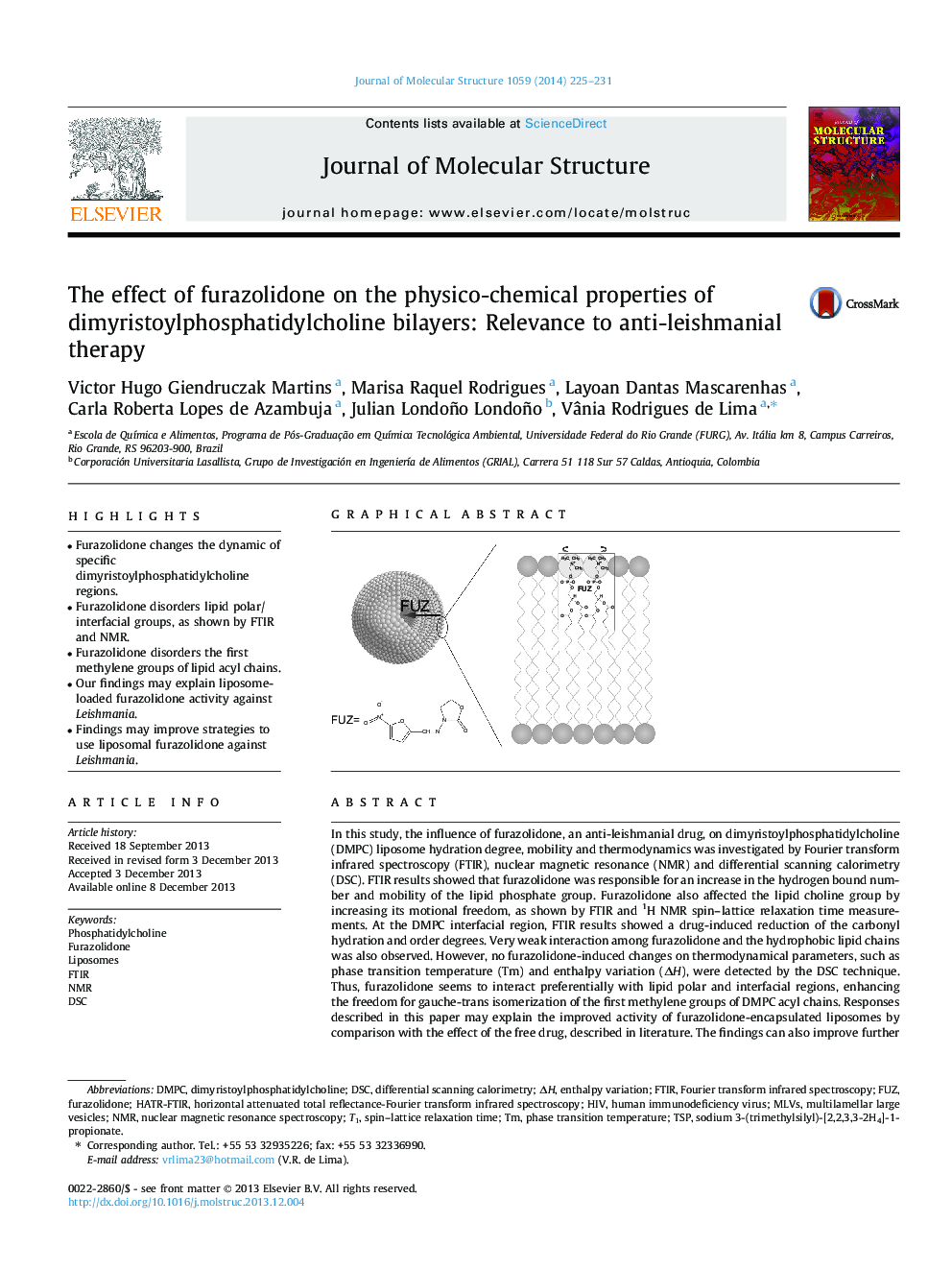| Article ID | Journal | Published Year | Pages | File Type |
|---|---|---|---|---|
| 1405714 | Journal of Molecular Structure | 2014 | 7 Pages |
•Furazolidone changes the dynamic of specific dimyristoylphosphatidylcholine regions.•Furazolidone disorders lipid polar/interfacial groups, as shown by FTIR and NMR.•Furazolidone disorders the first methylene groups of lipid acyl chains.•Our findings may explain liposome-loaded furazolidone activity against Leishmania.•Findings may improve strategies to use liposomal furazolidone against Leishmania.
In this study, the influence of furazolidone, an anti-leishmanial drug, on dimyristoylphosphatidylcholine (DMPC) liposome hydration degree, mobility and thermodynamics was investigated by Fourier transform infrared spectroscopy (FTIR), nuclear magnetic resonance (NMR) and differential scanning calorimetry (DSC). FTIR results showed that furazolidone was responsible for an increase in the hydrogen bound number and mobility of the lipid phosphate group. Furazolidone also affected the lipid choline group by increasing its motional freedom, as shown by FTIR and 1H NMR spin–lattice relaxation time measurements. At the DMPC interfacial region, FTIR results showed a drug-induced reduction of the carbonyl hydration and order degrees. Very weak interaction among furazolidone and the hydrophobic lipid chains was also observed. However, no furazolidone-induced changes on thermodynamical parameters, such as phase transition temperature (Tm) and enthalpy variation (ΔH), were detected by the DSC technique. Thus, furazolidone seems to interact preferentially with lipid polar and interfacial regions, enhancing the freedom for gauche-trans isomerization of the first methylene groups of DMPC acyl chains. Responses described in this paper may explain the improved activity of furazolidone-encapsulated liposomes by comparison with the effect of the free drug, described in literature. The findings can also improve further strategies for the potential therapeutic application of liposomal furazolidone as a drug delivery system and minimize the risk of drug resistance and collateral effects related to high toxicity.
Graphical abstractFigure optionsDownload full-size imageDownload as PowerPoint slide
